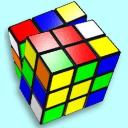Yahoo Answers is shutting down on May 4th, 2021 (Eastern Time) and beginning April 20th, 2021 (Eastern Time) the Yahoo Answers website will be in read-only mode. There will be no changes to other Yahoo properties or services, or your Yahoo account. You can find more information about the Yahoo Answers shutdown and how to download your data on this help page.
Trending News
Ways and hands (counting problem)?
A question asks how many ways to get 2 pair, such that there isn't a 4 of a kind.
My thoughts are there are two cases.
case 1:
you get a full house, e.g. Ace, Ace, Ace, Duece, Duece
Case 2: You get 2 pair, and then a rank differing from both pairs. e.g. Ace, Ace, Duece, Duece, five
For the first case I did:
[(13 choose 1)*(4 choose 3)]*[(12 choose 1)*(4 choose 2)]
since I pick 3 cards of the same rank and then two others which are of a different rank.
I get that to equal 3744.
But, since the order in which I choose either the set of 3 or the set of 2 doesn't matter, I divide by 2!. giving me 1872
For the second case I got:
[(13 choose 1)*(4 choose 2)]*[(12 choose 1)*(4 choose 2)]*[(11 choose 1) * (4 choose 1)]
= 247104
But since the order in which I choose these 3 sets doesn't matter, I divide by 3!
= 41184
Adding the cases I get: 43056 ways to get 2 pair such that it is not 4 of a kind.
Please, someone tell me if I am correct, and if I am wrong, please tell me where I went wrong and what my misconception was.
3 Answers
- PuzzlingLv 77 years agoFavorite Answer
FULL HOUSE:
For the full house, you are almost there, but the division by 2! is unnecessary.
You pick the rank of the 3 of a kind --> C(13,1)
You pick the three suits --> C(4,3)
You pick the rank of the 2 of a kind --> C(12,1)
You pick the two suits --> C(4,2)
Because we can distinguish a 3 of kind from a 2 of a kind, you don't need to divide by 2!
C(13,1) * C(4,3) * C(12,1) * C(4,2)
3744 ways to get a full house
TWO PAIRS:
First pick the two ranks to be the two pairs --> C(13,2)
Pick the two suits for the first (e.g. smaller) rank --> C(4,2)
Pick the two suits for the second (e.g. larger) rank --> C(4,2)
Finally pick the remaining card out of the 44 remaining --> C(44,1) or as you did C(11,1) * C(4,1)
C(13,2) * C(4,2) * C(4,2) * C(11,1) * C(4,1)
123552 ways to get a two pairs (that aren't part of a full house)
Note: You could have continued with your method on this, but you only need to divide by 2!, the ways to pick the two pairs. I took care of this using C(13,2), but you did C(12,1) * C(11,1), and with that you'd need to divide by 2!. Again, you only have to worry about how to arrange the two pairs, not the other card because it is distinguishable.
Answer:
3744 + 123552
= 127296 ways to get two pairs (that aren't a four-of-a-kind)
P.S. There are numerous tables of poker probabilities you can use to confirm your answers. Here's one such table. It verifies the answers I've provided above. Those probabilities are for a specific hand that isn't a higher hand. For example, there are 36 straight flushes that are not one of the 4 royal flushes. Technically you wouldn't say that a full-house was two pairs, so I would clarify that your teacher expects you to count the full-house in your answer.
Source(s): http://www.cwu.edu/~glasbys/POKER.HTM - ?Lv 57 years ago
Well, can't be correct, as one can't have a chance of more than 1 = 100%.
Since I'm just not sure of the notation you're using, which is most likely just fine but I'm just not used to it (4 choose 3), let me share how I'd go at it, if you will: and at the end I'll try and guess where your misconception might be:
First case: 3 of a kind with 2 of a kind = full house:
Card 1: Any card. Probability is 52/52 = 1 so far. Times each of these:
Card 2: match the first card, 3/51 (3 left of that rank, in 51 cards left in the deck).
Card 3: match the first card again: 2/50 (same reasoning).
Card 4: any card except the 1 card left in the rank already chosen: 48/49.
Card 5: any card matching the 2nd rank chosen: 3/48.
So far, that's (3/51) (2/50) (48/49) (3/48).
Then I'd divide, to compensate for the fact that it doesn't really matter if the first choice was first in the hand, or the second choosing to match it was really 2nd in the hand; so I'd divide by 5!, the number of ways of rearranging 5 cards (or of rearranging the 5 choosings of them), so I'd reckon it as:
(3 / 51) (2 /50) (48 / 49) (3 / 48) / 5!, and start cancelling and doing the calculation:
= 3 * 2 * 48 * 3 / (51 * 50 * 49 * 48 * 5 * 4 * 3 * 2 cancel the 3, 2, 48
= 3 / (51 * 50 * 49 * 5 * 4) = 1 / (17 * 50 * 49 * 20) = 1 / 833,000 = approx 0.0000012
Second case: Two pair, with extra card of neither of the chosen ranks: same method:
First card, any card (probability = 52/52 = 1) Times each of these:
2nd card: any left in the chosen rank, of the cards remaining: 3 / 51.
3rd card: any card of another rank: 48 / 50 there being two left of the chosen rank.
4th card: any card matching the 2nd chosen rank: 3 / 49.
5th card: any card matching neither chosen rank: 44 / 48.
6th card: oops. There is no 6th card. Never mind!
So far we've got: (3/51) (48/50) (3/49) (44/48).
Again, I'd divide by 5!, the number of ways to arrange these five choosings, so it'd come out as
3 * 48 * 3 * 44 / (51 * 50 * 49 * 48 * 5 * 4 * 3 * 2) cancel one 3 and the 48
= 3 * 44 / 51 * 50 * 49 * 5 * 4 * 2 cancel in 44/4, and in 50/5
= 3 * 11 / 51 * 10 * 49 * 10 cancel in 3/51
= 11 / 17 * 49 * 100 and use a calculator
= 11 / 83300 = approx. 0.000132053
And that's how I'd do it, admitting I'm not so sure about the dividing by 5!, which I do to compensate for the fact that the hands are the same if they have the same five cards, regardless how they're arranged in one's physical hand.
Where was your misconception? Might be more than one, let me think it over a moment:
- first case, ... (4 choose 3)... and similar elsewhere, could it be you were focusing on choosing 3 cards out of 4, thinking of them being in the same rank? The choise is actually from the cards remaining in the deck, of which 3 would match the one chosen a moment earlier, maybe you'd rather write that as (51 choose 3), though I'm not sure...
Then again, but only if I was guessing right about the dividing by 5!, you were dividing by 2! to allow for it being the same hand, if the 3-of-a-kind were exchanged with the 2-of-a-kind. I'm thinking, instead, that you could do a lot more rearranging of the chosen cards, and still have the same hand dealt using the same probabilites and method already used to get these 5 cards: e.g. if you swap just one card from the 3-of-a-kind with one from the pair. Or if you swapped two cards within the 3-of-a-kind, or within the pair.
Well, I'll stop, as that's my best guess/explanation. Hope it has good clues in it for an answer! :-)
- Anonymous5 years ago
Sorry to hear that. Im guessing its happening at school? Bullies tend to feel more powerful when part of a group, or when they have some backing support. Maybe if you, your friend, and a group of other nice people all stick together, you will look a bit more intimidating than say, a bully in a group of 1, 2, or 3. You all stick together and maybe even talk down to the bully to make them feel smaller. Perhaps eventually they will "get" that they are not so big and powerful anymore, over time. Another thing you can do is simply avoid the bully. Sit in different areas in class, school, or the workplace. Knowing that you dont have much longer until you graduate kind of thing. (if thats the case at school). I know lots of girls who were bullies in highschool, yet now that they are much older, they are nicer people. Most put on weight or got pregnant, so they arent so tough looking anymore!





